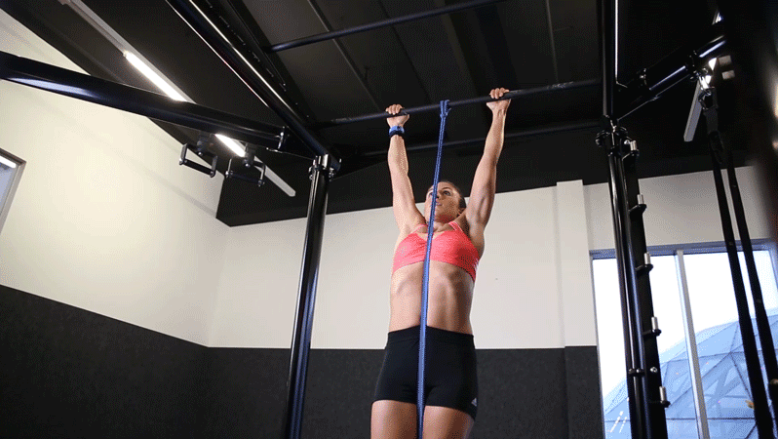One of the most effective bodyweight exercises is the pull-up. If you are looking to strengthen your back muscles, then the pull-up is the perfect exercise for you. It also increases your grip strength and works your upper arms. When done correctly, pull-ups also help improve your posture.
You can train specific muscle groups by adjusting how you grip the bar and where you position your hands. The overhand grip (your palms facing away from you) focuses on your back muscles (latissimus dorsi, trapezius, and rhomboid minor and major), whereas the underhand grip (your palms facing you) targets your upper arm flexors (biceps and brachialis). There is also a variation of the underhand grip known as the neutral or opposing grip (your palms face each other). Grip width also plays an important role: The wider your grip is, the more it will train your back muscles.
The only problem is that the pull-up is not one of the easier strength exercises to perform. You have to be able to pull up your entire body weight and in order to do that, you need a well-trained upper body.
How to master your first PULL-UP
The pull-up battle is real and for many athletes, getting that first strict pull-up is a goal. But what is the best way to get there? The familiar standbys – jumping pull-ups, pull-up negatives, banded pull-ups and partner assisted pull-ups – are all options and each has it’s place depending on what the workout calls for. Now let’s add a couple other options to your repertoire.
If a pull-up is still too hard for you, you need to strengthen the individual muscles you use to do a pull-up. We have put together a training program below to help you achieve your goal.
Your training program
- Work out twice a week (with at least 48 hours of rest between sessions).
- Three sets of eight to 12 repetitions per exercise (with 90-120 seconds rest between sets). You need to be able to still do at least 8 repetitions in the third set of Exercises 1 and 2 before including the next exercise in your training program.
Don’t Have Strict Pull-Ups? Try Mixing These 5 Variations into Your Routine
Note: Make sure to warm up your muscles before working out. And remember to keep your shoulders down and back and to pull your shoulder blades toward your spine.
1) Steated PULL-UP
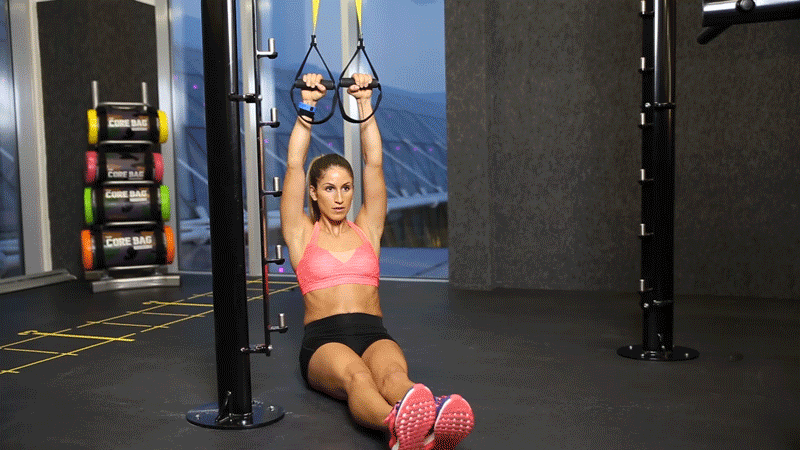
You can increase the difficulty of this exercise by adjusting the height of the straps or pull-up bar. The lower the strap or bar, the higher the intensity will be.
2) Introverted Row:
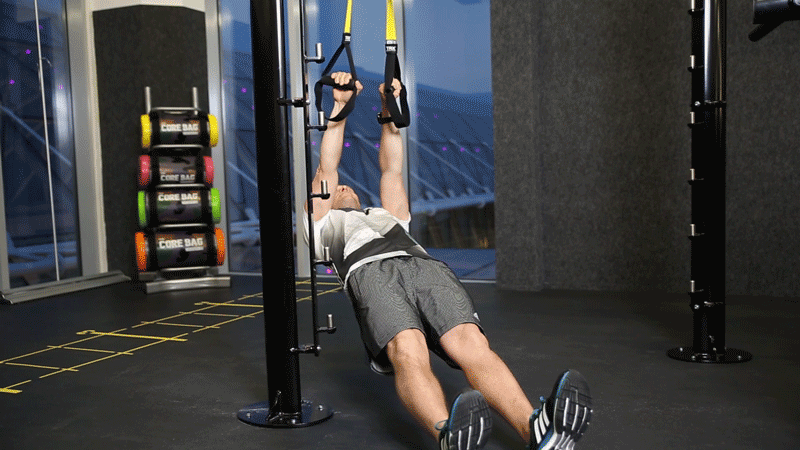
You can increase the difficulty of this exercise by adjusting the height of the straps or pull-up bar. The lower the strap or bar, the higher the intensity will be.
3)Assisted PULL-UP
Benefits of assisted pullups
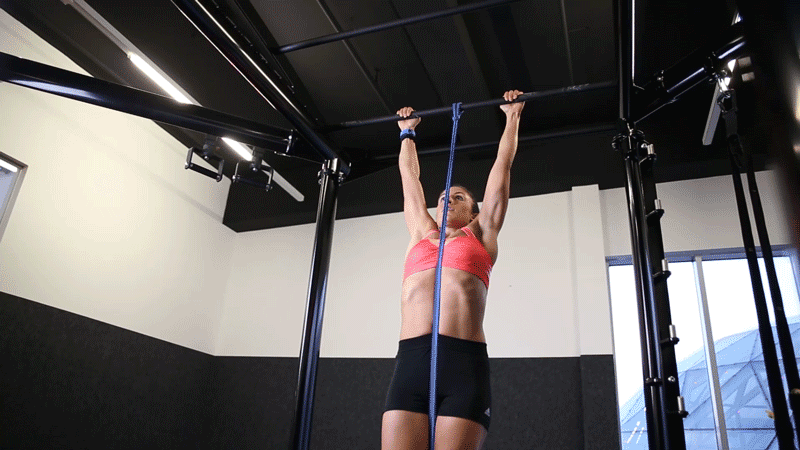
Assisted pullups let you build strength and perfect your movement and body positioning.
While these variations may not give you the same strength as regular pullups, you’ll still be gaining strength and targeting the same muscles. Plus, you can work on:
- building grip strength
- improving your stability
- perfecting your form
As long as you’re improving your fitness level and moving toward your goals, you can count the variations as progress.
Choose a resistance strength that allows you to do 8-12 repetitions.
4) Negative PULL-UP:
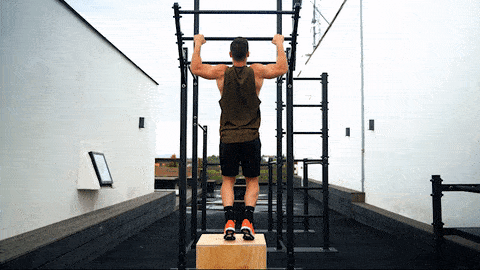
A negative pull up will be a more advanced way to build even greater strength and muscle. The added resistance will force your muscles to adapt which leads them to get bigger and stronger.
With the Negative Pull-ups, you want to keep increasing the time under tension as much as possible. 3 Sets of 5 seconds is the first main goal you want to hit.
When the goal is building up to Pull-Ups, we want to do them every day. You’ll have to wait and see how your recovery handles as you progress, but you shouldn’t have much of an issue.
Some people will need to keep working at this longer than others, and if you notice you start plateauing after a couple of workouts, it might be time to switch things up.
5) Assisted Pull-ups with a Partner
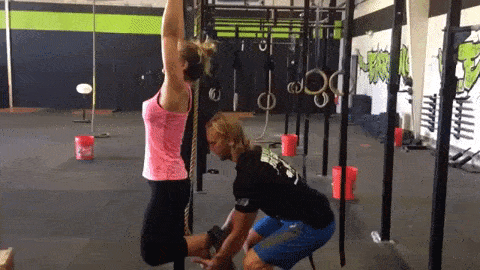
Have a friend hold your feet behind you and help you complete each rep. Have them use the least amount of help possible to get you through your workouts.
Once you’re comfortable doing a form of assisted pull-ups, and can do about 10 repetitions, it’s time to advance to the next level.
